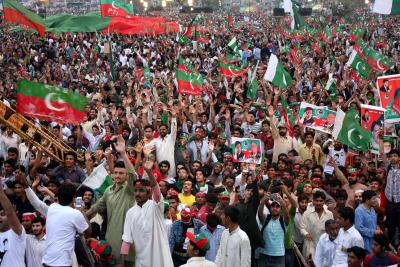
Khartoum, Dec 5 (IANS) Nearly a year and a half after his sister’s death, Moheddine Saleh still keeps a vivid memory of how his sister was buried in the courtyard of their house in the Al-Inqaz neighborhood, south of the Sudanese capital Khartoum.
“No one from my family attended the burial. We buried my sister in a shallow hole in the courtyard of our house,” he said.
On July 17, 2023, three months after the conflict erupted between the Sudanese Armed Forces (SAF) and the paramilitary Rapid Support Forces (RSF) on April 15, a stray bullet struck Saleh’s sister. She died hours later, as the ongoing violent clashes prevented Saleh from taking her to a nearby hospital.
The war has disrupted traditional funeral customs and mourning ceremonies usually attended by the relatives and colleagues of the deceased, Saleh said.
“The war not only killed my sister, but also denied her a proper funeral,” he said, Xinhua news agency reported.
In the centre of Al-Salama neighbourhood, south of Khartoum, an entire market has been transformed into a temporary cemetery.
“These graves now stand as witnesses to the injustice of men to his fellow men. What happened here is unbelievable. Dozens have died from direct confrontations or random shelling,” said Ehab Hashim, a Sudanese lawyer who lives nearby.
While Hashim acknowledged that temporary graveyards had been a reasonable solution given the challenging security conditions, he warned of potential legal consequences.
“Undoubtedly, the ways the dead were buried did not comply with legal methods, and was not done through legal authorities, undermining the legal rights of the victims and obscuring the details of the circumstances of their deaths,” he said.
In Omdurman city, north of the capital Khartoum, local residents faced a similarly dire situation.
Less than a month after the outbreak of the conflict, a shell fell on Omdurman’s Al-Omda neighborhood, killing three family members of Ashraf Abdul-Rahman.
“We had to bury them inside the house, even though a traditional cemetery was only about 400 meters away,” said Abdul-Rahman.
“It was a difficult decision, but we had to. Going into the street to reach the cemetery would have meant we would get killed too as bullets were falling like rain,” he added.
There are no precise statistics on the number of bodies buried inside homes, public squares, or in front of public facilities since the fighting began. However, estimates from the Resistance Committees, a Sudanese volunteer group, suggest the number could reach 3,000.
Among them were Majdolin Youssef, a Sudanese doctor, and her sister, who were buried in the garden of their home in Khartoum on May 13, 2023, after being found dead under the rubble of their house following artillery shelling, according to local media reports.
Khalid Sanhouri, a renowned Sudanese musician and violinist, was buried in front of his home in the al-Molazmeen neighborhood of Omdurman in July 2023. Sanhouri died from severe blood circulation failure, and due to the security situation at the time, it was impossible to transport him to a hospital.
Sudan faced a humanitarian disaster following the outbreak of the conflict between the SAF and RSF. The deadly conflict has claimed over 27,120 lives and displaced over 14 million people, either inside or outside Sudan, according to estimates by international organisations.
–IANS
as/




